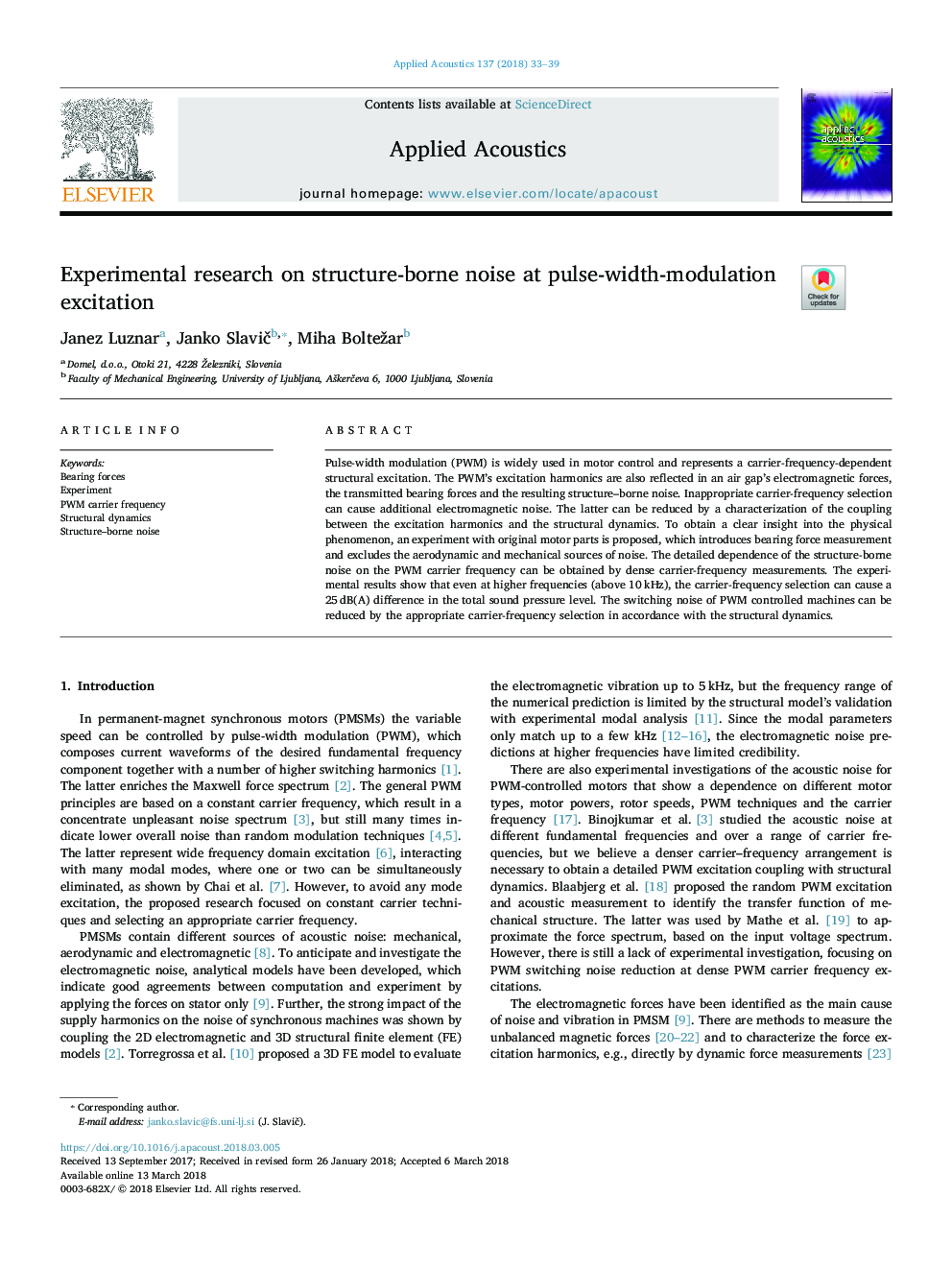| Article ID | Journal | Published Year | Pages | File Type |
|---|---|---|---|---|
| 7152200 | Applied Acoustics | 2018 | 7 Pages |
Abstract
Pulse-width modulation (PWM) is widely used in motor control and represents a carrier-frequency-dependent structural excitation. The PWM's excitation harmonics are also reflected in an air gap's electromagnetic forces, the transmitted bearing forces and the resulting structure-borne noise. Inappropriate carrier-frequency selection can cause additional electromagnetic noise. The latter can be reduced by a characterization of the coupling between the excitation harmonics and the structural dynamics. To obtain a clear insight into the physical phenomenon, an experiment with original motor parts is proposed, which introduces bearing force measurement and excludes the aerodynamic and mechanical sources of noise. The detailed dependence of the structure-borne noise on the PWM carrier frequency can be obtained by dense carrier-frequency measurements. The experimental results show that even at higher frequencies (above 10â¯kHz), the carrier-frequency selection can cause a 25â¯dB(A) difference in the total sound pressure level. The switching noise of PWM controlled machines can be reduced by the appropriate carrier-frequency selection in accordance with the structural dynamics.
Keywords
Related Topics
Physical Sciences and Engineering
Engineering
Mechanical Engineering
Authors
Janez Luznar, Janko SlaviÄ, Miha Boltežar,
